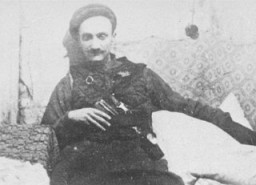You searched for: ���������������qee9.com������������������������6������S2O
<< Previous | Displaying results 101-150 of 267 for "���������������qee9.com������������������������6������S2O" | Next >>
-
Frank Bleichman
ArticleLearn more about Frank Bleichman, a Polish partisan who resisted and fought against the Nazis during World War II.
-
Holocaust Deniers and Public Misinformation
ArticleLearn more about Holocaust deniers, public misinformation, and antisemitism.
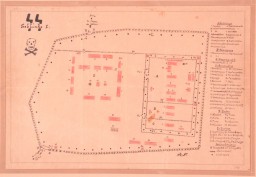
-
Western Desert Campaign: Egypt and Libya
ArticleLearn more about the Western Desert campaign during World War II in Egypt and Libya between 1940-1943.

-
World War II in the Pacific
ArticleThe United States declared war on Japan on December 8, 1941, following the attack on Pearl Harbor. Learn more about World War II in the Pacific.
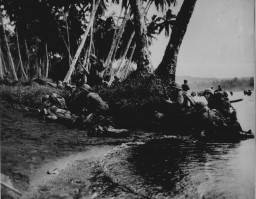
-
German Railways and the Holocaust
ArticleThe European rail network played a crucial role in the implementation of the Final Solution. Millions were deported by rail to killing centers and other sites.
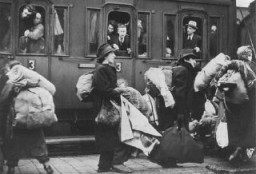
-
Plight of Jewish Children
ArticleDuring the Holocaust, some children went into hiding to escape Nazi persecution. They faced constant fear, dilemmas, and danger.
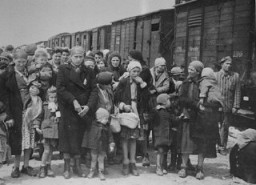
-
The United States Army Signal Corps
ArticleThe US Army Signal Corps had a crucial role in documenting—in both film and photographs—the atrocities perpetrated during the Holocaust.
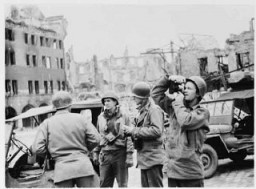
-
Voyage of the St. Louis
ArticleThe voyage of the St. Louis, a German ocean liner, dramatically highlights the difficulties faced by many people trying to escape Nazi terror. Learn more.
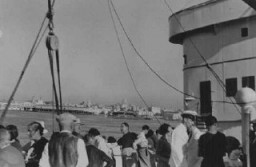
-
Subsequent Nuremberg Proceedings, Case #11: The Ministries Case
ArticleThe Ministries Case was Case #11 of 12 Subsequent Nuremberg Proceedings against leading German industrialists, military figures, SS perpetrators, and others.
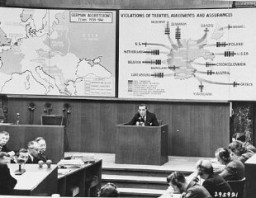
-
The 101st Airborne Division during World War II
ArticleThe 101st Airborne participated in major WWII campaigns and is recognized for liberating the Kaufering subcamp of Dachau in 1945.
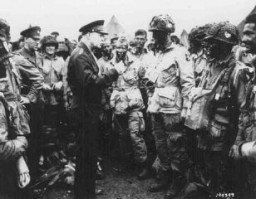
-
The 8th Infantry Division during World War II
ArticleThe 8th Infantry Division participated in major WWII campaigns and is recognized for liberating the Wöbbelin subcamp of Neuengamme in 1945.
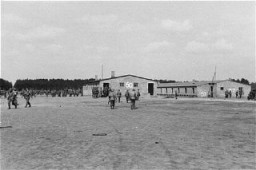
-
The 63rd Infantry Division during World War II
ArticleThe 63rd Infantry Division participated in major WWII campaigns and is recognized for liberating several of the Kaufering subcamps of Dachau in 1945.
-
The 80th Infantry Division during World War II
ArticleThe 80th Infantry Division participated in major WWII campaigns and is recognized for liberating Buchenwald and the Ebensee subcamp of Mauthausen in 1945.
-
The 83rd Infantry Division during World War II
ArticleThe 83rd Infantry Division participated in major WWII campaigns and is recognized for liberating the Langenstein subcamp of Buchenwald in 1945.
-
The 90th Infantry Division during World War II
ArticleThe 90th Infantry Division participated in major WWII campaigns and is recognized for liberating the Flossenbürg concentration camp in 1945.
-
The 82nd Airborne Division during World War II
ArticleThe 82nd Airborne Division participated in major WWII campaigns and is recognized for liberating the Wöbbelin subcamp of Neuengamme in 1945.
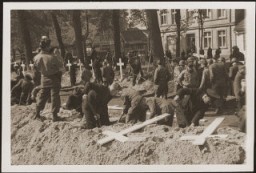
-
World War II: In Depth
ArticleGermany started World War II in Europe on September 1, 1939, by invading Poland. War would continue until 1945. Learn more about key events in the history of WWII.
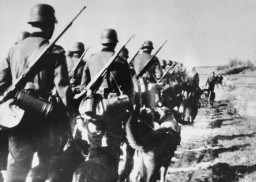
-
Börgermoor Camp
ArticleBörgermoor was part of the Nazi regime’s early system of concentration camps. It was located in the Emsland region of Prussia.
-
World War I and its Aftermath: Key Dates
ArticleExplore a timeline of key events in the history of World War I and its aftermath. Learn about the conflict and its divisive peace.

-
Freiberg
ArticleLearn about the Freiburg subcamp of Flossenbürg, including its establishment, prisoner population, and conditions there.
-
Martin Niemöller: Biography
ArticleProtestant pastor Martin Niemöller emerged as an opponent of Adolf Hitler and was imprisoned in camps for 7 years. Learn about the complexities surrounding his beliefs.
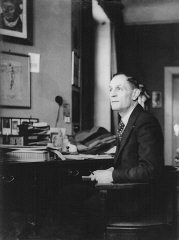
-
Incitement to Genocide in International Law
ArticleAfter the Holocaust, the IMT charged the first case of “incitement to genocide.” Learn more about the crime and its application in modern genocide law.
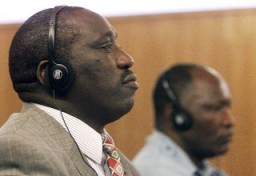
-
The Holocaust in Macedonia: Deportation of Monastir Jewry
ArticleIn March 1943, Bulgarian authorities transported the entire Jewish community of Monastir to a transit camp from which they were deported to Treblinka.
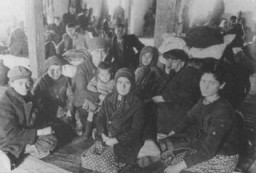
-
1941: Key Dates
ArticleExplore a timeline of key events during 1941 in the history of Nazi Germany, World War II, and the Holocaust.
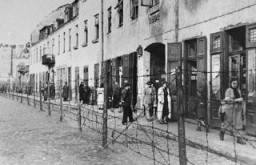
-
1943: Key Dates
ArticleExplore a timeline of key events during 1943 in the history of Nazi Germany, World War II, and the Holocaust.

-
Halle
ArticleHalle an der Saale was a satellite camp of Buchenwald concentration camp. It was established by the Nazis in Saxony, Germany in 1941.
-
Berga-Elster ("Schwalbe V")
ArticleAt the Berga-Elster subcamp of Buchenwald, prisoners were forced to do dangerous and brutal work in tunnels to support fuel production for the German war effort.
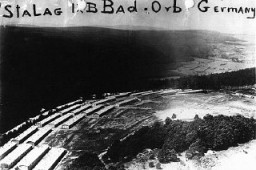
-
Mirjana Babunovic Dimitrijevic
ID CardMirjana was the second of three children born to well-to-do Serbian parents in the capital of Bosnia, in central Yugoslavia. Her father was a successful businessman and prominent Serbian nationalist. Like her parents, Mirjana was baptized in the Serbian Orthodox faith. Mirjana attended elementary school in the multi-ethnic city of Sarajevo. 1933-39: While in secondary school, Mirjana studied foreign languages and toured western Europe. In 1938 she graduated. That fall she enrolled as a student of English…
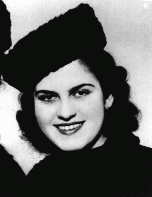
-
Cedomir Milan Sorak
ID CardCedomir was the oldest of five children born to Serbian Orthodox parents. The Soraks lived in the multi-ethnic city of Sarajevo, the capital of the region of Bosnia. Cedomir's father, Milan, was an engineer employed by the Yugoslav state railways, and his Hungarian-born mother, Andjelija, was a housewife. 1933-39: The Sorak family moved to Zagreb after Cedomir's father was promoted to the position of assistant director of the rail system in the region of Croatia. He graduated from secondary school in 1938…
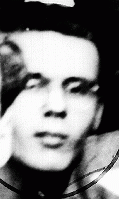
-
Wladyslaw Piotrowski
ID CardWladyslaw was born to Catholic parents in Russian-occupied Poland. He grew up in Plock, a town located in a rural area north of Warsaw. Wladyslaw married in 1918 and he and his wife, Marie, raised four children. 1933-39: Wladyslaw worked as a bookkeeper, and then as an accountant for a local farmers' cooperative. In 1931 he was sent to the town of Wyszogrod to close a failing branch of the farmers cooperative. A year later, he organized a new, successful cooperative in Wyszogrod with local farmers and…
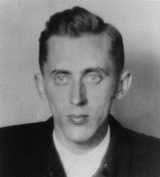
-
Germans search Jews for weapons
PhotoGerman personnel on Grzybowska Street arrest and search Jewish men who supposedly hid weapons prior to the German occupation of Warsaw. Warsaw, Poland, October-December 1939. This is one of a series of photos taken by Arthur Grimm, an SS propaganda company photographer, documenting the investigative work of the Sicherheitsdienst (SD) in occupied Warsaw for the Berliner Illustrierte Zeitung. Although only some of the photos were published, it is likely that the incidents depicted in the BIZ were staged…

-
Krakow Ghetto: Key Dates
ArticleExplore a timeline of key events during the history of the Krakow ghetto in German-occupied Poland.

-
Bergen-Belsen: Key Dates
ArticleExplore a timeline of the history of the Bergen-Belsen camp in the Nazi camp system. Initially a POW camp, it became a concentration camp in 1943.
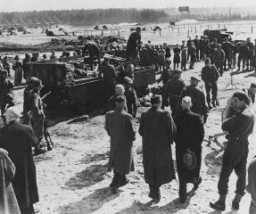
-
Decree against Public Enemies
ArticleThe Decree against Public Enemies was a key step in the process by which the Nazi leadership moved Germany from a democracy to a dictatorship.
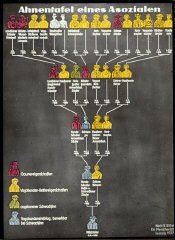
-
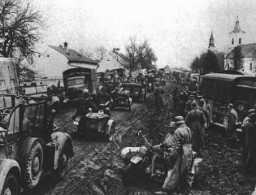
-
Return to Europe of the St. Louis
ArticleIn May 1939, the St. Louis set sail from Germany to Cuba. Most of the passengers, fleeing Nazi Germany, were denied entry. Learn more about their fates.
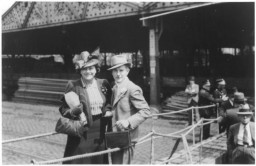
-
Hungary before the German Occupation
ArticleTowards the end of 1940, Hungary joined the Axis powers and invaded Yugoslavia and the Soviet Union. Learn more about Hungary before the German occupation.
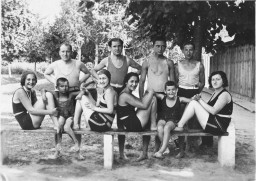
-
Polish Victims
ArticleIn September 1939, the Germans launched a campaign of terror intended to destroy the Polish nation and culture. Learn more about the German occupation of Poland.
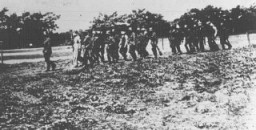
-
History of the United States Holocaust Memorial Museum
ArticleThe United States Holocaust Memorial Museum opened in April 1993. Explore the history of the nation's memorial to the millions murdered during the Holocaust.
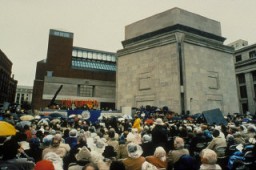
-
The Evian Conference
ArticleAt the July 1938 Evian Conference, delegates from nations and organizations discussed the issue of Jewish refugees fleeing persecution in Nazi Germany. Learn more
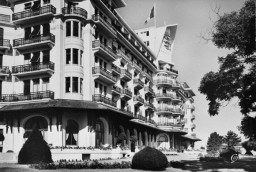
-
Locating the Victims
ArticleThe Germans and their collaborators used paper records and local knowledge to identify Jews to be rounded up or killed during the Holocaust.
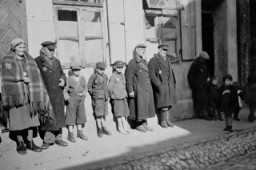
-
Killing Center Revolts
ArticleUnder the most adverse conditions, prisoners initiated revolts in killing centers. Learn more about prisoner uprisings in Treblinka, Sobibor, and Auschwitz.
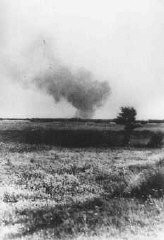
-
Prisoners of the Camps
ArticleJews were the main targets of Nazi genocide. Learn about other individuals from a broad range of backgrounds who were imprisoned in the Nazi camp system.
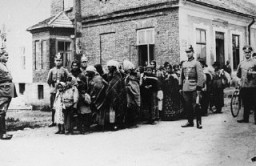
-
1938: Key Dates
ArticleExplore a timeline of key events in the history of Nazi Germany during 1938.
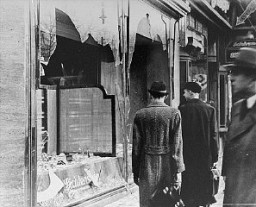
-
Althammer
ArticleThe Germans established the Althammer camp in September 1944. It was a subcamp of Auschwitz. Read more about the camp's history and conditions there.
-
The Nuremberg Code
ArticleLeading German physicians and administrators were put on trial for their role during the Holocaust. The resulting Nuremberg Code was a landmark document on medical ethics. Learn more
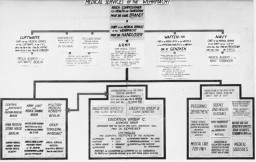
-
Reich Security Main Office (RSHA)
ArticleThe Reich Security Main Office (RSHA), created by Heinrich Himmler, brutally coordinated and perpetrated many aspects of the Holocaust.

-
Evidence from the Holocaust at the First Nuremberg Trial
ArticleProsecutors before the IMT based the case against 22 leading Nazi officials primarily on thousands of documents written by the Germans themselves. Learn more.
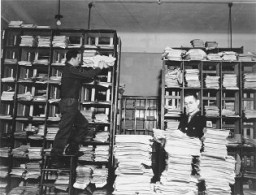
-
The Rwanda Genocide
ArticleFrom April to July 1994, extremist leaders of Rwanda’s Hutu majority directed a genocide against the country’s Tutsi minority. Learn more
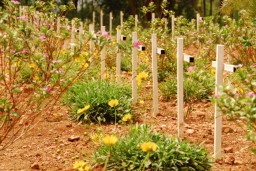
-
Chaim Yelin
ArticleYiddish writer Chaim Yelin was a leader of the Kovno ghetto underground resistance movement again the Germans.
